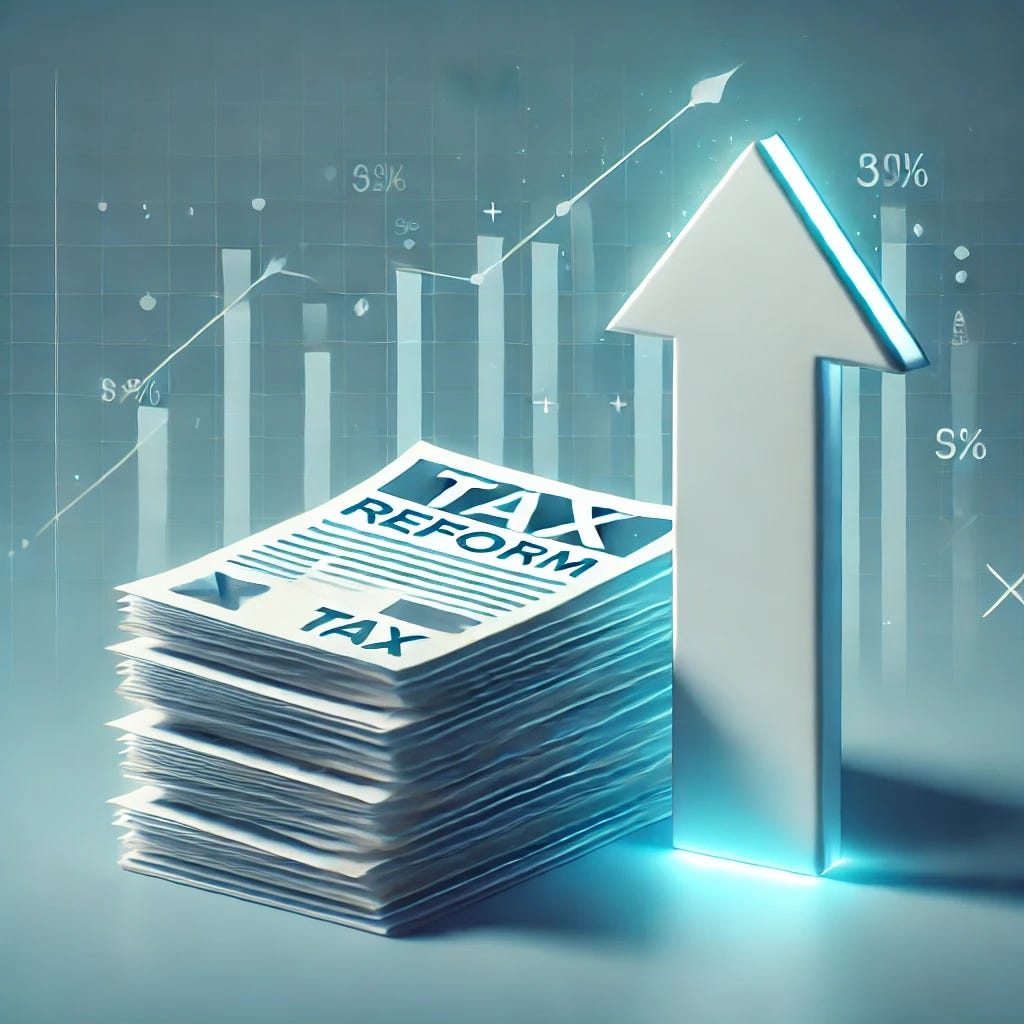A Principled Approach to Tax Expenditures
Previewing our new research on tax expenditures
As policymakers in Washington, DC prepare to renew expiring provisions of the Tax Cuts and Jobs Act (TCJA) later this year, they should consider reforms that would move us closer to a simpler, more neutral, and growth-oriented tax base.
In a new paper published this week, Veronique de Rugy and I take a deep dive into what the ideal tax base looks like, examine where we are now, and discuss how to move our current tax system closer to that ideal. This paper serves as a roadmap for achieving a more efficient, fairer, and less distortionary tax code, while also identifying low-hanging fruit for policymakers in implementing tax cuts and full expensing without blowing up the long-term budget deficit.
In our view, the ideal tax code is something close to the Hall–Rabushka Flat Tax system, which has a flat tax rate on wages and business cash flow of maybe 17% or 19%, no tax on savings and investment, no depreciation schedules, and very few tax exemptions. In other words, a tax base characterized by low tax rates and broad bases. In this vision, policymakers are not using the tax code to micromanage behavior or to pick winners and losers through tax incentives.
We also acknowledge that our current tax code is quite far from the ideal and account for political restraints placed on policymakers in attempting to simplify the tax base. For this reason, our roadmap distinguishes between tax expenditures that we would retain to avoid double taxation of income, distortionary provisions to eliminate, and reform options that might move us incrementally towards a more neutral tax base.
It is also worth noting that the needle has moved towards a broader and simpler tax base in recent years. For example, the TCJA in 2017 lowered marginal tax rates, doubled the standard deduction, limited itemized deductions, and moved us closer to a territorial tax system.
Despite these notable improvements, our tax code remains so convoluted that Americans collectively spend almost 8 billion hours a year simply complying with tax requirements. When combined with out-of-pocket expenses, this results in compliance costs of $456 billion a year, or roughly 2% of GDP. This is not just a failure of tax compliance but a glaring indictment of a system that has become so complex that even the most diligent taxpayers struggle to navigate it.
In the absence of fiscal consolidation, the renewal of expiring TCJA provisions is likely to add about $4.6 trillion in new deficit spending in the coming decade—on top of the $22 trillion in deficits already expected. In this sense, reforming, limiting, and eliminating some of the 170 tax expenditures in our current code would achieve two goals at once: simplifying the tax code and demonstrating fiscal prudence by offering pay fors.
Take, for instance, just 11 of the 170 tax expenditures listed by the Treasury, which includes provisions such as the SALT deduction and municipal bond interest exemption. If we implemented reforms and limitations to these 11 provisions as recommended in our roadmap, this would raise over $3.8 trillion over 10 years—enough revenue to cover 82% of the cost of TCJA renewal.
In total, almost $26 trillion will be spent through the tax code over the coming decade—by eliminating or limiting many of these provisions policymakers could free up revenue to pass growth-inducing reforms that should be a priority in any tax-reform debate. Full and immediate expensing should be a central goal, as well as faster write-offs for investment in residential and nonresidential structures and lower rates on corporate income and capital gains.
By building upon the pro-growth reforms of TCJA and pairing back costly and distortionary tax expenditures, policymakers can take meaningful steps toward a simpler, fairer, and more fiscally responsible tax code.


